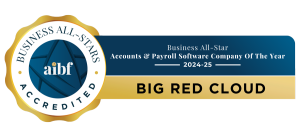Putting data to work
Even the smallest business generates huge amounts of commercial data on its customers and the markets it operates in which – if used correctly – can help predict future demand.
It is often said that information is power, but only if you know what to do with it. This is one of the reasons for the emergence of ‘big data analysis’, which in simple terms describes the process of extracting business intelligence from the structured and unstructured data generated by a business.
Structured data is found in fixed fields within files or records and can include customer names, addresses, and payment details. Examples of unstructured data include emails and social media messages, which often include useful commercial information but in a format that cannot be easily transferred to a database or spreadsheet.
Start small
An obvious motivation for using big data analysis is to find a solution to a specific business requirement (for example, why customer retention rates have fallen). Start small and focus on a specific challenge – a scattergun approach with no specific challenge in mind can lead to what experts call ‘analysis paralysis’ where you spend so much time analysing the cause of problems that you never get around to fixing them.
For example, the weblogs captured when a customer or prospect explores your website or app provide information that can be used to improve the customer experience. Or you could combine internal customer data with external social media data to help you better understand your customers’ purchasing preferences.
Buying time
One of the main reasons why big data analysis is so useful is that it helps you spend more time analysing information and less time trying to pull data together from various sources.
There are many software vendors offering big data analysis products and there are also free, open source applications available that can be used to interrogate data and present the results in the form of charts and reports.
A big data strategy can be created relatively quickly. Identifying the parts of the business that could benefit and designing a roadmap of how you will incorporate the insights generated sounds like a lot of work, but could probably be covered off in half a day.
Don’t get ahead of yourself
The legendary baseball coach Yogi Berra once famously said it was difficult to make predictions, especially about the future. He may have been joking, but also made a good point – no matter how much information you have on what has happened, you can never be entirely sure what will happen.
Big data analysis should be used to support decision making and you should not be afraid to challenge the information and how it is being interpreted. Some businesses will use it as a substitute for gut instinct, while others will consider both before making decisions.
Data quality is also an issue. Insights derived from unreliable data are of no use, which is why the detailed, up-to-date financial information available from a cloud-based accounting solution such as Big Red Cloud is so valuable.




